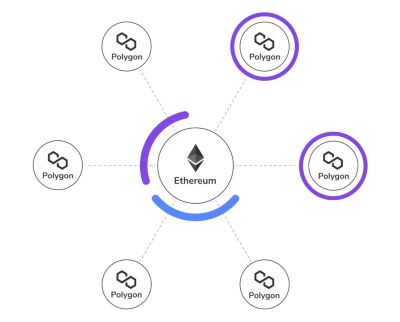We offer our complete guide to the Polygon (MATIC) Cryptocurrency and Blockchain Network. Includes financial data, key features, historical info, and technical details. Brought to you by Digital Financial Market
Last Updated: 1/13/2022
Polygon (MATIC) Cryptocurrency
The Polygon Network is an Ethereum-based blockchain to scale transactions, blockchains, and Ethereum networks using the Polygon Ecosystem. Dubbed the “Internet of Blockchains,” Polygon seeks to reduce gas fees, allow cross-blockchain compatibility, and expand on key themes such as Security as a Service.
The MATIC token is an Ethereum based (ERC-20) token that is the native currency for Polygon Network fees. The office Headquarters for Polygon is in Bengaluru, India.

Key Points of Polygon
- Affordable transaction fees
- Reliable Network Stability and Scalability
- Cross-Blockchain Compatibility for Ethereum based Networks
See Polygon MATIC Official Website.
Polygon (MATIC) Price Chart
Polygon Historical Price Chart
History of Polygon
The Polygon Network was created by founders Jaynti Kanani, Sandeep Nailwal, and Anurag Arjun in October of 2017. It was successfully launched as early as 2019 after successfully crowdfunding through a Binance launch and listing.
Another key developer, Mihailo Bjelic, had joined the team as co-founder in 2020. The founding team and governing stakeholders decided to change the name of the network from Matic to Polygon in Feburaury of 2021.
In January 2022, the Polygon gas fee skyrocketed from avg. $0.01 USD to a high of $0.50 due to extreme network congestion. The Polygon team identified the backlog as a result of a newly launched Play-To Earn Game called Sunflower Farms (SFF) which had many blockchain heavy transactions built into the application. The issue was later resolved, reducing transaction prices.
On January 19th 2022, the network implemented the EIP-1559 protocol so that transaction fees will burn MATIC tokens in order to deflate the overall supply.


Good write.. keep writing..